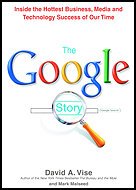Mr McMillan Speaks
Paraphrasing Yale Hirsch, "Santa Claus has failed to call (so far), so Bears may come to Broad and Wall." Mr. Hirsch coined the term "Santa Claus rally," and did the research on its effects. It extends over seven trading days -- the last 5 trading days of one year and the first 2 of the next year. So far, four of the seven days have passed, and $SPX is down 14 points and the NASDAQ Composite Index is down 28 points. If the seven-day period finishes with a loss, Mr. Hirsch has noted that that has negative implications for the ensuing weeks and perhaps months -- not always, but often.
Looking at our technical indicators, they are in a tenuous state, but are not all on full-fledged sell signals yet. $SPX broke down below 1260 this week, which means it violated an initial support area, and it fell below its 20-day moving average as well. This is mildly negative, but more important is the support at 1250. As long as that holds, the downside would be limited. Conversely, if $SPX should plunge below 1250, it will probably generate heavy selling as many traders are placing "stops" just below there.
The equity-only put-call ratios are now both bearish -- a new development. The weighted ratio gave a sell signal last week and has moved higher, solidifying that sell signal (Figure 3). The standard ratio joined its "partner" on Thursday with a sell signal of its own -- at least according to our computer projections. This is very similar to last year (look at the left hand side of Figures 2 and 3), when the weighted ratio gave an early sell signal, while the standard sell signal came more or less simultaneously with the top near the beginning of 2005.
Breadth has been bouncing back and forth. As a result, the breadth has given several sell signals, the last of which occurred early this week.
Volatility indices ($VIX and $VXO) had recently dropped once again to near 10-year lows ($VXO was below 10!). This week, there has been a modest increase in these indices, which is modestly negative. However, unless $VIX closes above 12.50, we would consider its movements as merely noise within a bullish overall picture of $VIX remaining low.
In summary, these indicators are starting to get quite negative. We expect $SPX and $VIX to follow suit, but we are reluctant to get too bearish without their confirmation. We would not take negative positions in $SPX until it breaks below 1250.
One final point: the media and the bulls are saying that there is a lot of pessimism out there, and that markets don't necessarily repeat themselves, so they expect January to be bullish. Of course, markets don't repeat themselves, but that's hardly a reason to be bullish for January. As for the pessimism, we don't see it. $VIX is near historic lows; that's not pessimistic -- it's complacent, if anything. Furthermore, put-call ratios are not at highs -- which is where they'd be if there were pervasive pessimism.
To receive the complete commentary plus reccomendations visit here:
http://www.optionstrategist.com/offers/strategist.htm



